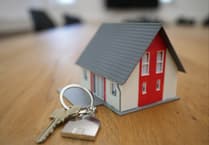A flooring expert has revealed the most common types of floor damage during a home renovation - and how to avoid them.
Due to the nature of construction work, floors can be subject to damage throughout renovation projects. However, floors can be prepped sufficiently to reduce the level of damage sustained during refurbishment.
To explore this further, Liam Cleverdon, the flooring expert at Flooring King, has examined the most common types of floor damage endured throughout renovations.
Additionally, he’s also shared some key tips for preventing damage when undergoing renovations.
Liam said: “Renovating your home can be a really exciting time, offering the perfect opportunity to refresh and enhance aesthetics. However, the construction aspect can often lead to damage, particularly with flooring - but what are the most common types of flooring damage experienced by homeowners?”
Common types of flooring damage during renovation
1. Scratches and scuffs
“Firstly, one common occurrence during renovation is scratches and scuffs. It’s safe to say there’s heavy foot traffic within homes during construction, with large items or materials being taken from one area to another and potentially dropped or dragged. In time, this can lead to marks appearing on floors, particularly with hardwood or laminate flooring, which are more prone to scratches.
2. Water damage
“Water damage is also commonly experienced during renovations. Many refurbishments will require some plumbing work - which can increase the risk of water damage. Unfortunately, this can have a detrimental effect on the health of your floor, leading to discolouration, mould and even instigating a warping effect, changing the look and structure of the floor entirely. To avoid this headache entirely, I’d recommend ensuring your home is as watertight as possible in sections where flooring is exposed throughout the renovation procedure.
3. Surface and structural damage
“A more general type of damage seen throughout renovation is mess, made up of dirt or debris. Untreated mess can build up quite quickly during the renovation period, with heavy foot traffic and messy surroundings. This mess could lead to surface damage, and could also weaken any adhesive on vinyl floors.”
How to protect floors during renovation

Liam said: “While damage can be frustrating to deal with, there are ways to prepare and protect floors, to reduce the long-term effects. Let’s take a look at some of the ways people can safeguard their flooring against renovation damage.
“Prior to the refurbishment process, I would recommend covering floors with protective materials such as plastic sheets or rosin paper. Utilising this protection can help reduce scratches and scuffs while also shielding against spills - it can also make the cleaning process a lot quicker and easier.
“Moving on, it’s important to communicate with the construction workers set to carry out the renovations. Ensuring the professionals know the importance of maintaining the condition of floors within the property can set healthy expectations and can increase accountability among workers.
“Avoiding dragging or sliding big pieces during renovation is the most effective way to reduce marking or stains. Again, this is a topic that can be raised with the construction team to help negate floor damage.
“Lastly, cleaning regularly is a factor often overlooked by homeowners, but is effective for minimising dirt and debris build-up - which could lead to staining if it’s left untreated. Renovators can maintain the cleanest look possible by regularly vacuuming and mopping with a damp micro-fibre cloth.”




